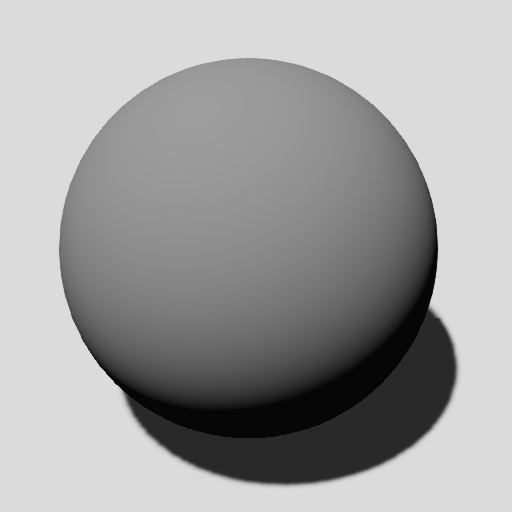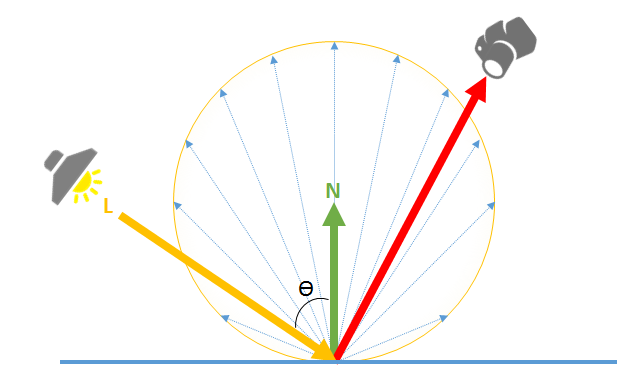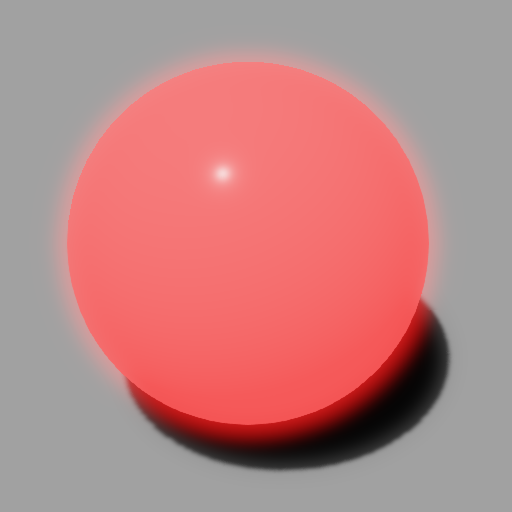Shading attributes
The material shading attributes define the color characteristics of the material and how it reacts to light.
Note
To display a material, you need to select at least one shading model (diffuse, specular or emissive model) in the model attributes.
The diffuse is the basic color of the material. A pure diffuse material is completely non-reflective and "flat" in appearance.

The final diffuse contribution is calculated like this:
the diffuse defines the color used by the diffuse model
the diffuse model defines which shading model is used for rendering the diffuse component (see below)
Currently, the diffuse attribute supports only a diffuse map.
The diffuse model determines how the diffuse material reacts to light. You can use the Lambert or cel-shading.
Lambert model

Note
A pure Lambertian material doesn't exist in reality. A material always has a little specular reflection. This effect is more visible at grazing angles (a mostly diffuse surface becomes shiny at grazing angle).
A specular is a point of light reflected in a material.
The specular color can be defined using a metalness map (which uses the diffuse color as a base color), or a specular map (the specular color is defined separately from the diffuse color).
The metalness map simplifies parametrization between the diffuse and specular color.
By taking into into account the fact that almost all materials always have some "metalness"/reflectance in them, using the metalness map provides realistic materials with minimal parametrization.
The final specular color is calculated by mixing a fixed low-reflection color and the diffuse color.
With the metalness color at , the effective specular color is equal to
0.02, while the diffuse color is unchanged. The material is not metal but exhibits some reflectance and is sensitive to the Fresnel effect.

Gloss =
0.8Diffuse =
#848484, Lambert- Specular GGX
The specular map provides more control over the actual specular color, but requires you to modify the diffuse color accordingly.
Unlike the metalness workflow, this lets you have a different specular color from the diffuse color even in low-reflection scenarios, allowing for materials with special behavior.
Note
You can combine metalness and specular workflows in the same material by adding separate layers.
A pure specular surface produces a highlight of a light in a mirror direction. In practice, a broad range of specular materials, not entirely smooth, can reflect light in multiple directions. Xenko simulates this using the microfacet model, also known as .
The microfacet is defined by the following formula, where Rs is the resulting specular reflectance:

An emissive material is a surface that emits light.



